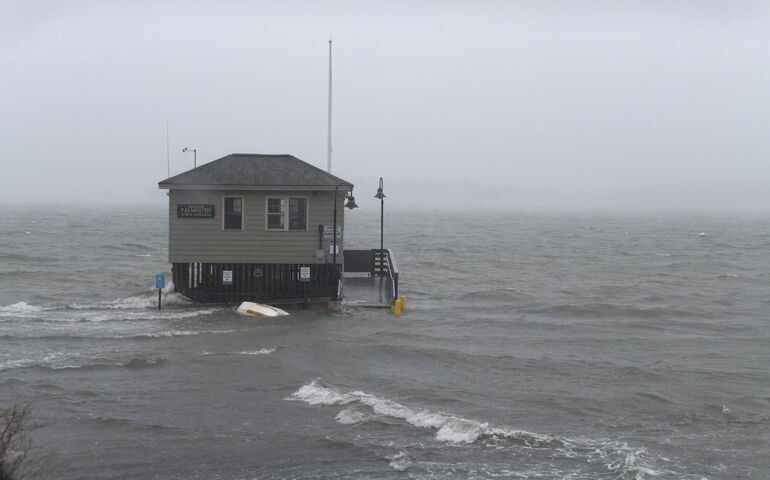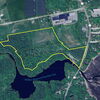Processing Your Payment
Please do not leave this page until complete. This can take a few moments.
- News
-
Editions
-
- Lists
-
Viewpoints
-
Our Events
-
Event Info
- Women's Leadership Forum 2025
- On the Road with Mainebiz in Bethel
- Health Care Forum 2025
- On The Road with Mainebiz in Greenville
- On The Road with Mainebiz in Waterville
- Small Business Forum 2025
- Outstanding Women in Business Reception 2025
- On The Road with Mainebiz in Bath
- 60 Ideas in 60 Minutes Portland 2025
- 40 Under 40 Awards Reception 2025
- On The Road with Mainebiz in Lewiston / Auburn
- 60 Ideas in 60 Minutes Bangor 2025
Award Honorees
- 2025 Business Leaders of the Year
- 2024 Women to Watch Honorees
- 2024 Business Leaders of the Year
- 2023 NextUp: 40 Under 40 Honorees
- 2023 Women to Watch Honorees
- 2023 Business Leaders of the Year
- 2022 NextUp: 40 Under 40 Honorees
- 2022 Women to Watch Honorees
- 2022 Business Leaders of the Year
-
-
Calendar
-
Biz Marketplace
- News
-
Editions
View Digital Editions
Biweekly Issues
- April 21, 2025 Edition
- April 7, 2025
- March 24, 2025
- March 10, 2025
- Feb. 24, 2025
- Feb. 10, 2025
- + More
Special Editions
- Lists
- Viewpoints
-
Our Events
Event Info
- View all Events
- Women's Leadership Forum 2025
- On the Road with Mainebiz in Bethel
- Health Care Forum 2025
- On The Road with Mainebiz in Greenville
- On The Road with Mainebiz in Waterville
- + More
Award Honorees
- 2025 Business Leaders of the Year
- 2024 Women to Watch Honorees
- 2024 Business Leaders of the Year
- 2023 NextUp: 40 Under 40 Honorees
- 2023 Women to Watch Honorees
- 2023 Business Leaders of the Year
- + More
- 2022 NextUp: 40 Under 40 Honorees
- 2022 Women to Watch Honorees
- 2022 Business Leaders of the Year
- Nomination Forms
- Calendar
- Biz Marketplace
Officials urge Mainers recovering from storm: Document and report
 Photo / Fred Field
An overturned dinghy floats near the harbormaster’s building at the Falmouth Town Landing, which was cut off from the mainland as high tide approached on Jan. 13.
Photo / Fred Field
An overturned dinghy floats near the harbormaster’s building at the Falmouth Town Landing, which was cut off from the mainland as high tide approached on Jan. 13.
Areas of Maine’s coastline are now permanently transformed by a pair of powerful winter storms that caused widespread flooding and coastal erosion, damaged infrastructure and destroyed homes and businesses.
Rain, snow and near-hurricane-force winds hit the state Jan. 10 and then returned Jan. 13 with added danger — an astronomical high tide.
Saturday’s storm compounded Wednesday's storm damage, which had already been declared a civil emergency by Gov. Janet Mills. With that designation, federal relief may become available to Mainers.
Hundreds of people looking for such help attended a webinar Tuesday hosted by the Island Institute. The discussion featured leaders from the Maine Department of Marine Resources, Maine Department of Economic and Community Development and the Maine Emergency Management Agency, who talked about recovery resources potentially available to coastal and island businesses and homeowners.
“There’s still a lot that we don’t know,” said Kimberly Hamilton, president of the Island Institute.
But a key takeaway for coastal businesses, homeowners and communities? Document and report.
While documentation is not a guarantee of financial relief, it helps the state to understand the magnitude and scope of the damage and the resources needed, in preparation for a disaster declaration request to the Federal Emergency Management Agency, said Anne Fuchs, director of mitigation, planning and recovery for the Maine Emergency Management Agency.
The FEMA process could take about two months before its resources will be available to Maine, she said.
“A lot of people are hurting, we recognize that,” said Fuchs. “We’re doing what we can with the resources we currently have.”
Unseen damage
Reports plus an aerial survey conducted by the Department of Marine Resources, with the support of the Maine Forest Service, revealed extensive damage to commercial fishing infrastructure from Kittery to Eastport, although the magnitude varies based on the location, said DMR Commissioner Patrick Keliher.
Southeasterly facing ports took the hardest hits, he said. Harpswell, for example, saw storm surges on the east side of the harbor that destroyed wharves.
Unseen damage is a concern, Keliher said.
For example, a wharf might look fine on the surface, but its underpinnings might be broken and pilings missing.
“Understanding that will be critical to understanding the entire amount of damage along our waterfront,” Keliher said.
MEMA and DMR are urging individuals of private industry and privately owned commercial infrastructure who sustained property damage from the storms — including wharves, floats and vessels — to document and report the damage by filling out a Business and Agriculture Initial Damage Assessment Survey. Click here to access the survey.
The survey is not an application for assistance nor a guarantee of financial assistance. Submission of damage information will help the state to understand the extent of damage.
Individuals who sustained damages to their primary residence are encouraged to report their damages to 211 Maine or report the damage by filling out an Individuals and Households Initial Damage Assessment Survey — also not an application for assistance nor a guarantee of financial assistance. Click here to access the survey.
The state launched an online “Maine Flood Resources and Assistance Hub” that aggregates information, resources and assistance for Maine people impacted by flooding and damages. Click here to access the hub.
On Jan. 11, Gov. Janet Mills declared a state of civil emergency for Maine’s eight coastal counties — Cumberland, Hancock, Knox, Lincoln, Sagadahoc, Waldo, Washington and York.
The declaration mobilized state resources to support response and recovery efforts and to position the state to seek federal financial assistance through a federal disaster declaration.
The Maine Emergency Management Agency has been working with local partners to assess damage caused by the storms.
New territory
“This is new territory for the DMR because we’re seeing it on such a scale as it pertains to working waterfront,” said Keliher.
In addition to FEMA, potential help could be available, said panelists, from agencies such as the National Oceanic and Atmospheric Administration, the U.S. Department of Agriculture, the U.S. Small Business Administration’s low-interest disaster loan program to help businesses and homeowners recover from declared disasters,
The Island Institute is aggregating resources on its website, including a recording of Tuesday’s discussion. Click here to view the page.
The institute expanded its Business Resilience Grant program to support recovery efforts, said Hamilton.
Loss of access
Loss of fishing access is an immediate consideration for individual businesses, said Keliher.
Individual businesses are looking at whether they can shore up working waterfront infrastructure to provide at least some level of access to harvesters.
“That’s being worked on right now, more on an individual business basis,” said Keliher.
For the long term, the DMR and other agencies are looking at building back infrastructure in a more resilient fashion. In the face of climate change and sea level rise, building a wharf back as it was constructed will only mean a repeat failure, Keliher said.
“This is the new norm,” said Keliher. “We need to make sure that, as we build back, we’re building higher and stronger. Those are the considerations. How can we build back in a way that will be productive and secure for the future?”
MEMA has received nearly 500 damage assessment reports from coastal businesses to date, said Fuchs.
“This was a highly devastating event for businesses along the coastline,” said Fuchs.
Said Keliher, “We can’t reiterate enough filling out the forms and getting the forms in as quickly as possible.”














0 Comments